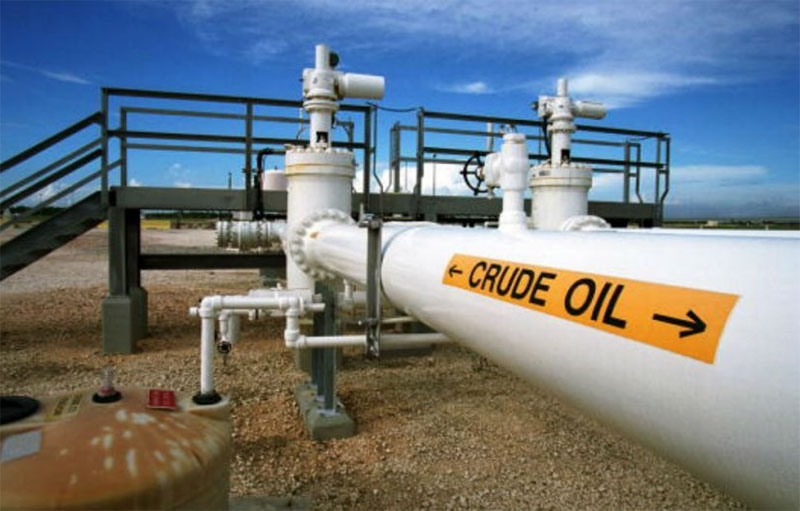
Source: US EIA Oil Stocks Report | Geoffrey Craig, S&P Global Platts Oil Futures Editor | September 15, 2016
U.S. EIA Data Reported
- Implied* distillate demand drops 412,000 barrels per day (b/d)
- Gulf Coast crude imports recover from plunge
- Cushing, Oklahoma, crude stocks fall 1.2 million barrels
NEW YORK (September 14, 2016) – U.S. inventories of gasoline and distillates rose last week, overshadowing a surprise draw in crude oil stocks reported Wednesday by the Energy Information Administration (EIA).
Total U.S. distillate stocks rose 4.619 million barrels to 162.754 million barrels, led by builds in the Atlantic Coast and Midwest of 3.512 million barrels and 2.145 million barrels, respectively.
Analysts expected distillate stocks to have risen 1.2 million barrels last week, compared with an average increase of 1.1 million barrels for the same reporting period between 2011 and 2015.
Distillate stocks now stand 16.28% above the five-year average for the same reporting week, jumping from a cushion of 13.86% last week.
Distillate fuel oil product supplied -- used as a proxy for implied demand -- slumped 412,000 b/d to 3.276 million b/d. As a four-week average, product supplied dropped 53,000 b/d to 3.648 million b/d.
While underwhelming demand may have driven much of the build in U.S. distillate inventories, trade movements capped the rise as exports rose 169,000 b/d to 1.137 million b/d. Distillate imports did not keep pace, rising 32,000 b/d to 140,000 b/d.
Tony Starkey, energy analysis manager at Platts Analytics, the forecasting and analytics unit of S&P Global Platts, pointed to refiners shifting towards distillate output ahead of the winter and away from gasoline at the end of the peak driving season as a another cause for the build in inventory.
The distillate glut on the Atlantic Coast showed no signs of abating, with regional stocks of low- and ultra- low sulfur diesel rising 3.113 million barrels to 60.771 million barrels, 81.54% above the five-year average for the same reporting week.
GASOLINE STOCKS BUILD
Total U.S. gasoline stocks rose 567,000 barrels to 228.36 million barrels, as a large build on the Gulf Coast offset draws in the Midwest, Atlantic Coast and West Coast.
Gasoline stocks were expected to rise 200,000 barrels, compared with an average build of 682,000 barrels at this time of year between 2011 and 2015.
U.S. exports of finished motor gasoline fell 102,000 b/d to 553,000 b/d, while a fall in product supplied of 189,000 b/d to 9.406 million b/d also likely contributed to the modest build.
Gasoline demand typically falls after the Labor Day holiday, with product supplied falling to 8.983 million b/d in the same reporting week last year.
U.S. refiner and blender adjusted net production of finished motor gasoline fell 273,000 b/d to 9.900 million b/d as refiners shift their product yields in fall, likely capping the size of the gasoline inventory build.
Citi analysts expected the closure of the Colonial Pipeline that carries gasoline to weigh on next week's inventory data.
"The pipeline spill on the Colonial Pipeline could mean a tighter New York market and a spike in imports to fill the gap," they wrote.
Colonial Pipeline's Line 1, which normally ships 1.37 million b/d of gasoline north from the U.S. Gulf Coast, has been shut since late last week because of an integrity issue found in Alabama.
CRUDE IMPORTS REBOUND
U.S. crude stocks fell 559,000 barrels to 510.798 million barrels in the week that ended September 9, EIA said.
The draw was unexpected, as analysts surveyed were looking for crude stocks to increase 3.3 million barrels on the back of a rebound in imports.
Weather-related problems in the Gulf of Mexico -- which curtailed imports sharply the previous week -- subsided, allowing tankers to offload delayed cargoes.
U.S. Gulf Coast (USGC) imports rose 928,000 b/d last week to 3.406 million b/d, marking a return to recent levels. USGC imports averaged 3.44 million b/d in the four weeks ending August 26.
The uptick in imports pushed USGC stocks 2.260 million barrels higher to 269.09 million barrels.
Total imports recovered partly last week, rising 993,000 b/d to 8.062 million b/d. That was almost half the drop in the week that ended September 2, when imports plunged 1.848 million b/d.
By country of origin, the biggest increases last week came from Iraq, Colombia and Saudi Arabia, while imports from Canada declined 208,000 b/d to 2.949 million b/d.
Crude imports have been surging recently. Weekly imports have exceeded their year-ago levels by 710,000 b/d on average in the last 10 reporting periods.
Despite consecutive weekly draws, crude stocks last week were nearly 55 million barrels above where inventories stood a year earlier.
REFINERY UTILIZATION DIPS
With refineries heading into the depths of the autumn maintenance period over the next few weeks, demand is also likely to taper, boosting inventories.
Crude runs fell 200,000 b/d last week to 16.73 million b/d, pulling the refinery utilization rate 0.8 percentage point lower to 92.9% of capacity.
Analysts were looking for the utilization rate to have fallen 0.6 percentage points.
Refinery maintenance should peak in the first half of October, lowering crude runs to around 15.6 million b/d, according Citi analysts.
In the Midwest, refinery utilization declined last week by 1.3 percentage points to 97.1% of operable capacity, which was part of the reason for a fall in the region's crude stocks of 1.64 million barrels to 148.734 million barrels.
Stocks at Cushing, Oklahoma -- delivery point for the New York Mercantile Exchange (NYMEX) crude futures -- decreased 1.245 million barrels to 62.188 million barrels.
EIA estimates of U.S. crude production showed an increase of 35,000 b/d to 8.493 million b/d in the week that ended September 9. Output in the Lower 48 States increased 5,000 b/d to 8.035 million b/d, while production in Alaska rose 30,000 b/d to 458,000 b/d.
*Implied demand is the amount of product that moves through the U.S. distribution system, not actual end consumption.
